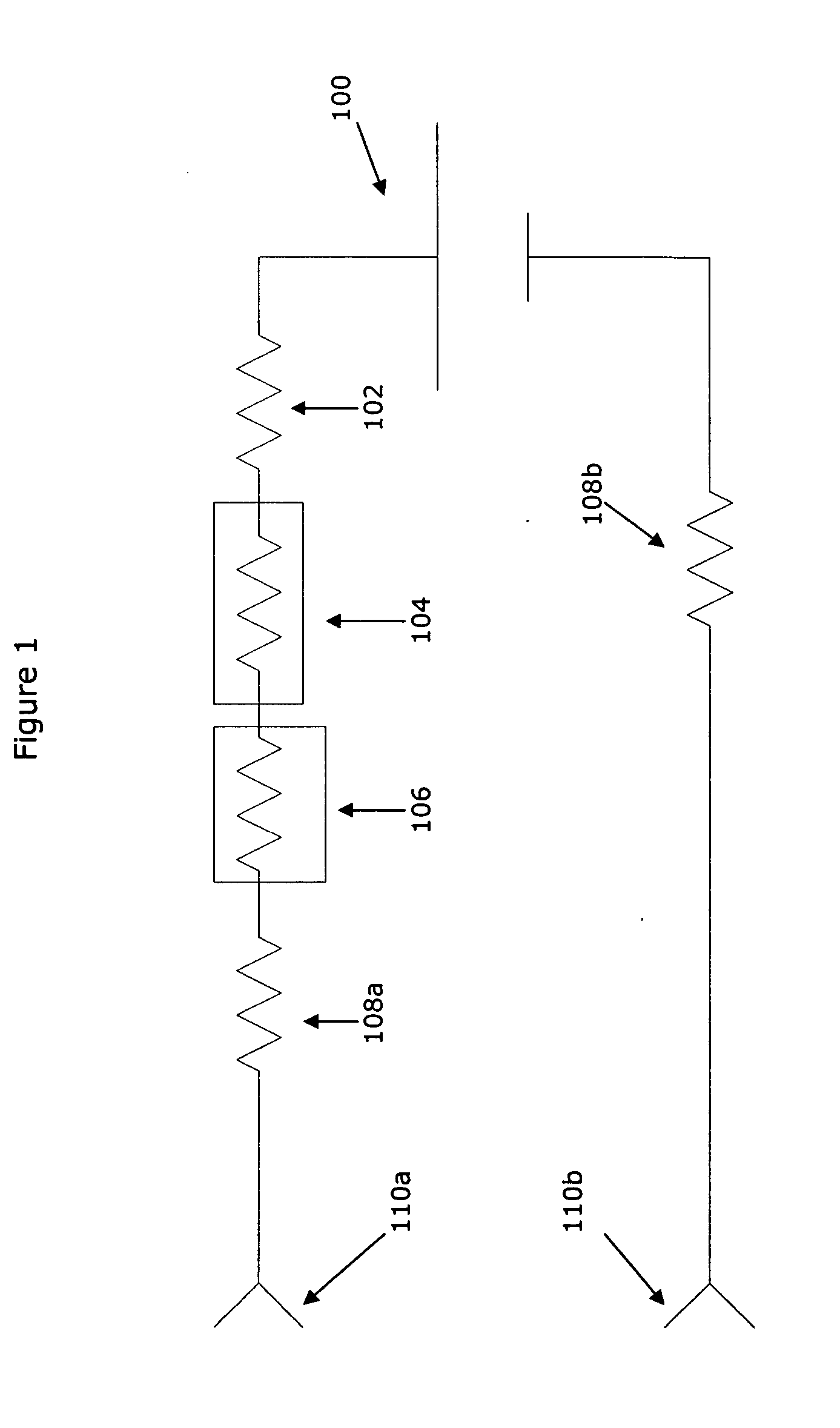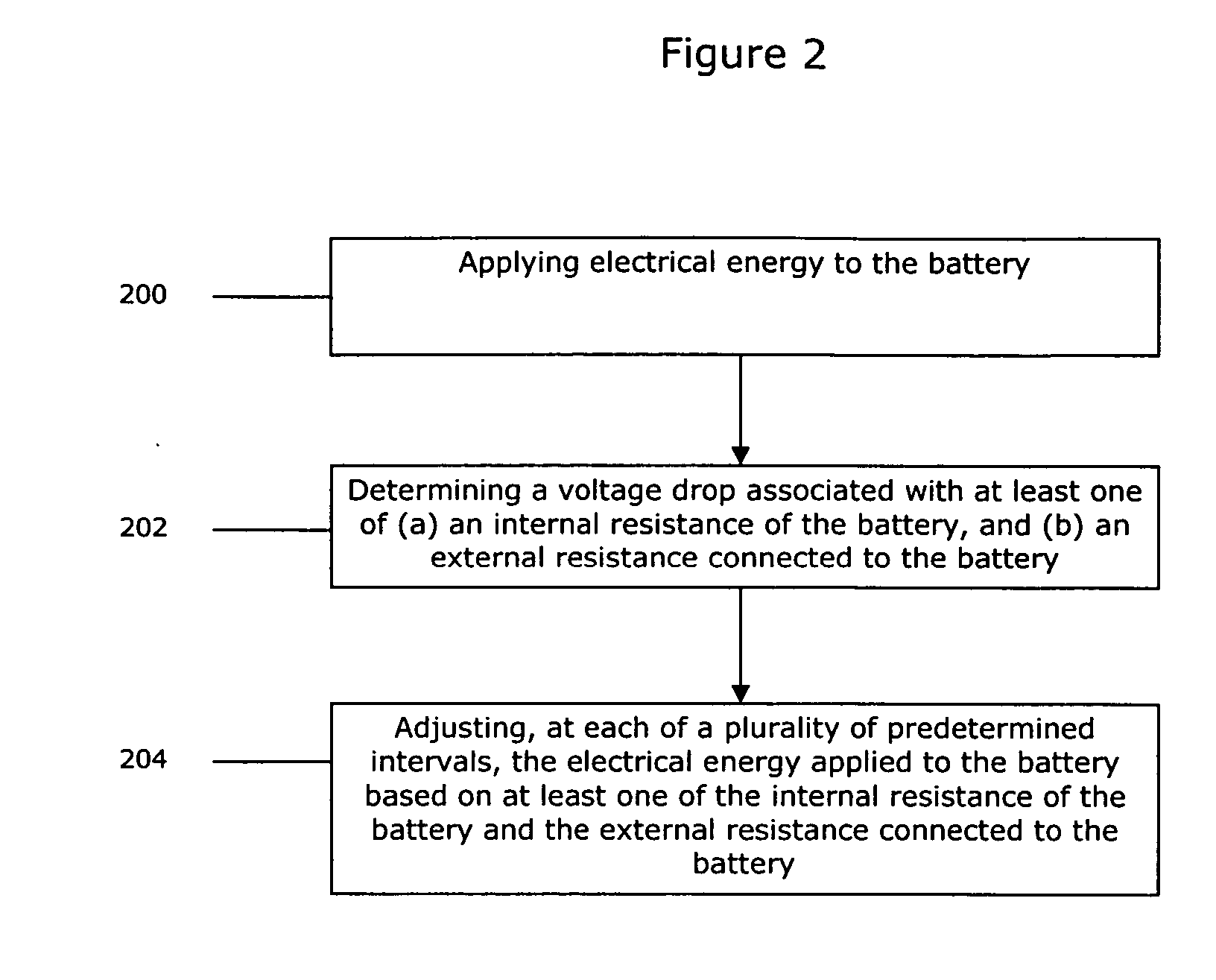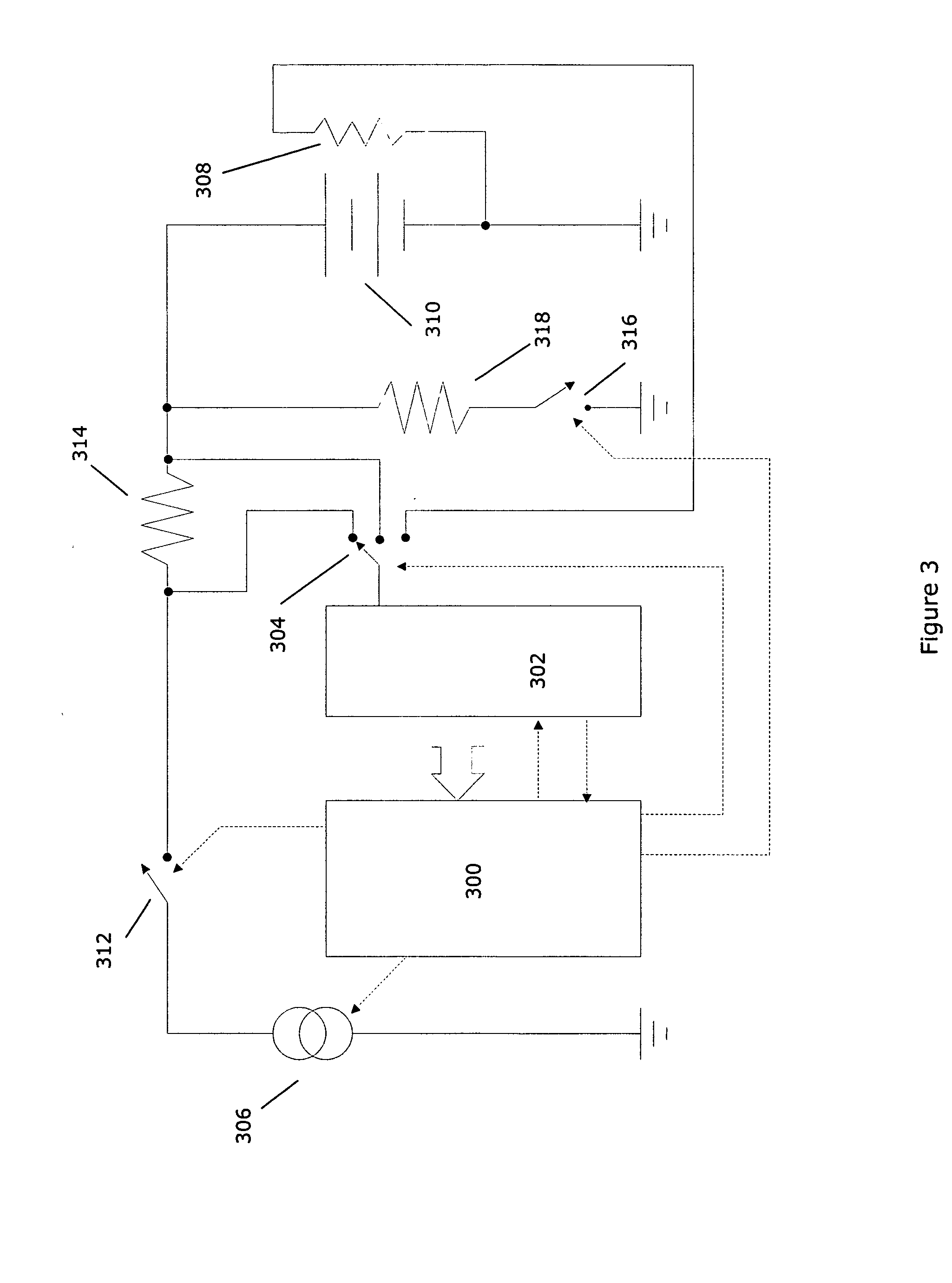Method of charging a battery
a battery and charging method technology, applied in the field of charging a battery, can solve the problems of not prohibitively expensive for use in certain products, lithium-based batteries have a low self-discharge rate, and the cost of lithium-based batteries is high
- Summary
- Abstract
- Description
- Claims
- Application Information
AI Technical Summary
Benefits of technology
Problems solved by technology
Method used
Image
Examples
Embodiment Construction
[0023] Preferred features of embodiments of this invention will now be described with reference to the figures. It will be appreciated that the spirit and scope of the invention is not limited to the embodiments selected for illustration. It is contemplated that any of the configurations and materials described hereafter can be modified within the scope of this invention.
[0024] U.S. Pat. No. 5,600,226 relates to battery charging techniques and is incorporated by reference herein for its teachings related to batteries and battery charging.
[0025] In relation to the battery charging methods described herein, electrical energy is applied to the battery. For example, during a constant current phase of a charging cycle, this electrical energy may be viewed as being supplied by a constant current source. Conversely, during a constant voltage phase of a charging cycle, this electrical energy may be viewed as being supplied by a constant voltage source. It is contemplated that the electric...
PUM
 Login to View More
Login to View More Abstract
Description
Claims
Application Information
 Login to View More
Login to View More - R&D
- Intellectual Property
- Life Sciences
- Materials
- Tech Scout
- Unparalleled Data Quality
- Higher Quality Content
- 60% Fewer Hallucinations
Browse by: Latest US Patents, China's latest patents, Technical Efficacy Thesaurus, Application Domain, Technology Topic, Popular Technical Reports.
© 2025 PatSnap. All rights reserved.Legal|Privacy policy|Modern Slavery Act Transparency Statement|Sitemap|About US| Contact US: help@patsnap.com



